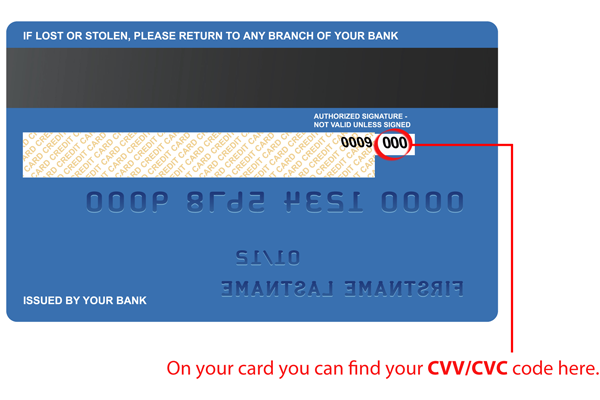
The CVV Number (“Card Verification Value”) on a credit card or debit card is a 3 digit number at the back of a VISA or MasterCard.
CVV numbers are also known as CSC numbers (“Card Security Code”), as well as CVV2 numbers, which are the same as CVV numbers, except that they have been generated by a 2nd generation process that makes them harder to “guess”.
This 3 digit code is required to complete online transactions, but also provides security against fraud.
The CVV (or CSC or CVV2) code is different from a PIN, which is a password required to complete a card transaction. It actually helps to verify that a card is physically available with the individual using it during the transaction. This prevents fraudsters who have stolen credit card information online through phishing scams from making transactions with the stolen credit card.
This is because the Payment Card Industry Data Security Standards prevents online merchants from storing the CVV codes from credit or debit cards in their databases. So when fraudsters obtain credit card information from online scams or hacks, they still don’t have access to the CVV code.
This is why you should never reveal your CVV code to anyone. It is just as essential to your security as your PIN.
It’s also why as a merchant you should require a CVV code in order to complete purchases on your online store. This will help to protect your business and your customers from any potential fraudulent transactions.

